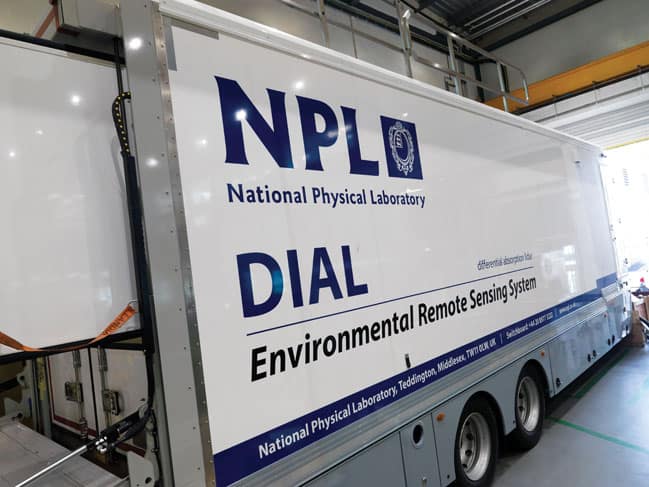I was one of the witnesses called to give evidence to the Environmental Audit Committee inquiry on the potential environmental risks of fracking. The National Physical Laboratory (NPL) had provided written evidence to the Committee, and I was asked to provide more details on some aspects of this, particularly the risk of fugitive methane emissions, or leaks.
In the Committee’s final report, published this week, any intentional ‘leaking’ – i.e. venting - of methane emissions was deemed to be unacceptable. It looks likely that, for production sites at least, that recommendation will be taken up, avoiding one source of emissions to the atmosphere.

There were also calls for full containment of methane to be mandated in all permits, independent monitoring, regular unannounced audits of fracking sites, and public disclosure of monitoring data. Containing all leaks is impossible on any industrial site, but operators ought to do their best to detect leaks - and then fix them - as soon as possible.
Monitoring methane leaks is an issue that has been much debated over recent years. Dr Robert Howarth and his team at Cornell University in the US raised it in their 2011 paper, Methane and the greenhouse-gas footprint of natural gas from shale formations.In this theyclaimed that shale gas is ultimately as polluting as coal due to the amount of methane leaked from both the fracking process and the transportation of the gas.
Dr Howarth and his team stated that the main reason behind this was down to the high global warming potential (GWP) of methane. Its climate change impact is at least 25 times that of carbon dioxide over a period of 100 years.
These are not disputed figures, far from it. If Dr Howarth were to run his numbers again using up-to-date figures, the results would be even more alarming. The latest report from the Intergovernmental Panel on Climate Change increased the estimate of the impact of methane from 25 times that of carbon dioxide to 28 times. The report also stated that when the ‘climate-carbon feedback’ impact of the gas is incorporated, the impact increases to 34 times that of carbon dioxide.
The leak rate from the fracking process has been the primary source of debate and hence the subject of a large number of scientific studies. Some studies calculate leaks based on gas flow rates; these tend to place the rate of leaks at anywhere between
1-8% of the gas produced over the lifetime of the well. Others have attempted to measure leaks using various methods. Examples include data collected from airplanes flying over shale basins, which suggested emissions of around 4% and data collected from monitoring equipment on tall towers in a different region, which suggested emissions of 6-12%. Further research studies in the US have taken place and the results will be published throughout 2015.
The hydraulic fracturing processes are likely to be different in the UK to the US, so it is difficult to apply US-led research findings here. For example some practices, such as allowing fracking flowback water to sit in evaporation pools, have contributed to methane emissions in the US but will not be allowed in the UK.
The second part of Howarth’s calculation looked at leak rates in transporting the gas. There is less research available in this area and it is even harder to transfer knowledge from one country to another due to variations in the state of the grid and how it is monitored.
In the UK, Ofgem recognises the contribution of gas transmission and distribution to the carbon footprint of the gas supply chain and has created a financial incentive of around £0.5bn for the networks to reduce fugitive losses. This is focusing minds on finding innovative ways to detect and reduce leaks from the grid.
We need to remember that at present all of our gas comes from conventional sources, which can also leak. The leak rate of conventional oil and gas extraction is conventionally thought of as between 0.5-2% of the gas produced over the lifetime of the well, but in reality this is likely to vary hugely from facility to facility.
At NPL we are working on two shale gas projects. Both will use our Differential Absorption Lidar (DIAL), a bespoke mobile monitoring station that will be used to measure emissions from UK-based operations. At present we have not completed any measurements (due to the lack of operational sites in the UK). Cuadrilla has agreed to provide access to operational sites once the licences have been obtained and work commences. Our projects build on previous work measuring methane leaks in other industries and our ongoing research and development programme.
The Report from the Environmental Audit Committee brings new arguments to the debate about fracking. From a measurement perspective there are three key elements that need to be addressed. Firstly, the baseline status of the environment is critical. For example, measuring the background levels of methane in the atmosphere around a site would allow regulators to compare measurements taken during and after fracking with those taken before. Alongside this should be guidelines for industry outlining a best practice approach to monitoring sites. Finally, we need to better understand leak rates and how leaks can be fixed or avoided altogether, to enable us to work towards agreeing mandatory standards for maximum leak rates.




Poll: Should the UK’s railways be renationalised?
I think that a network inclusive of the vehicles on it would make sense. However it remains to be seen if there is any plan for it to be for the...